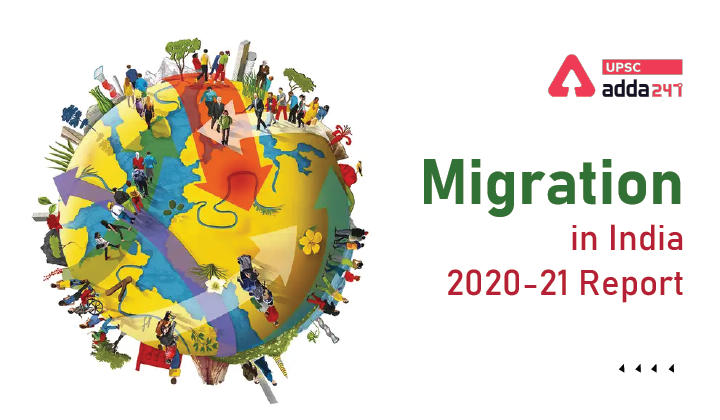Table of Contents
Migration in India UPSC: Relevance
- GS 2: Issues relating to development and management of Social Sector/Services relating to Health, Education, Human Resources.
Migration in India: Context
- According to a report named ‘Migration in India 2020-21 released by the Ministry of Statistics and Programme Implementation (MoSPI), 0.7 per cent of the total population was a ‘temporary visitor’ in households during July 2020-June 2021.
Migration in India 2021: Key points
- The ‘Migration in India’ report is based on first-time collection of additional data during the annual round of Periodic Labour Force Survey for July 2020-June 2021.
- The report separates the categories of ‘temporary visitors’ and ‘migrants’.
Difference between temporary visitors and migrants
- ‘Temporary visitors’: ones who arrived in households after March 2020 and stayed continuously for a period of 15 days or more but less than 6 months,
- Migrants: One whose last usual place of residence, any time in the past, is different from the present place of enumeration.

Migration in India 2021: Key findings
- Over 84 per cent of these ‘temporary visitors’ moved places for reasons linked to the pandemic.
- The reasons ranged from meeting family/relatives/friends, loss of job/closure of unit/lack of employment opportunities, migration of earning member, closure of educational institutions and health related reasons.
- Around half of the ‘temporary visitors’ moved to meet family/relatives/friends during July 2020-June 2021, while 15 per cent of such temporary visitors moved for health-related reasons and 12 per cent moved for loss of job/closure of unit/lack of employment opportunities.
Who are temporary visitors?
- Temporary visitors are categorised as those who arrived after March 2020 and stayed in the household continuously for a period of 15 days or more but less than 6 months.
Migration in India
- The all-India migration rate was around 30% in July-June 2020-21, with 26.5 per cent migration rate in rural areas and 34.9 per cent in urban areas.
- Females recorded a higher share of migration rate of 48 per cent, with 48 per cent in rural areas and 47.8 per cent in urban areas.
- The migration rate for males was seen at 10.7 per cent, with 5.9 per cent in rural areas and 22.5 per cent in urban areas.
- Among women, the highest level of migration rate was seen at 8 per cent for marriage.
- 50 per cent of the males migrated in search of employment.
- During July-June 2020-21, 9.2 per cent persons migrated due to migration of parent/earning member of the family, with 17.5 per cent males and 7.3 per cent females migrating for this reason.
Read current affairs for UPSC
| “CiSS Application” under the Baal Swaraj Portal Launched | India-Vietnam Relations: India and Vietnam Sign Mutual Logistics Agreement | India Ocean Mission in 2023 | Green Open Access Rules 2022 |
| Sustainable Development Report 2022 | Biotech Start-up Expo 2022: BIRAC | Rapid Increase in India’s Trade with Gulf Cooperation Council | National Strategy for Sustainable Tourism, Responsible Traveller Campaign |
| Ex Khaan Quest 2022 | National Tribal Research Institute (NTRI): To be Inaugurated as part of Azadi Ka Amrit Mahotsava | Growing Heavy Metal Pollution in Rivers | India’s International Cooperation in disability sector- An Overview |
| Ethanol Blending in India: India Achieved 10% Target Ahead of Schedule | Leaders in Climate Change Management | Understanding Gun Control Legislation in Various Countries | SHRESHTA Scheme Launched |



 TSPSC Group 1 Question Paper 2024, Downl...
TSPSC Group 1 Question Paper 2024, Downl...
 TSPSC Group 1 Answer key 2024 Out, Downl...
TSPSC Group 1 Answer key 2024 Out, Downl...
 Cabinet Ministers of India 2024, New Cab...
Cabinet Ministers of India 2024, New Cab...







